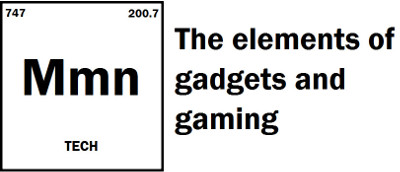

Why do first party Wii U games run so well, when others don’t?
A common complaint about the Wii U was just how poorly third party titles ran on the system. Nintendo’s black sheep console has often been accused of being underpowered. Yet even the most graphically demanding first party games seem to run smooth as butter, for the most part. At least no worse than what you’d see on other consoles. So what gives? Well it may have to do with how the console processes things compared to its seventh generation predecessors.
Ancient Materials? Ancient Materials!
So is the Wii U under powered? The short answer is a firm yes. The long answer is sort of. It’s well known that it’s less powerful than the PS4, Xbox One, and even the Switch. Yet there’s more to it than that.
Starting in the mid-2000s, Nintendo decided to take a new approach to hardware design. One which focused more on value and new ways to play, rather than raw performance. Which made sense at a time when the general public wasn’t quite ready for HD. The original Wii offered an attractive low cost alternative to Sony and Microsoft’s premium priced consoles.
The Wii U came about in an entirely different era though. Nintendo again chose to release a value focused console, opting to forgo powerful hardware for something cool and quiet that would keep mum happy. And the Wii U is indeed runs cooler than any console I’ve owned, even when playing its most demanding games.
Under the hood, its PowerPC “Espresso” processor features a tri-core design similar to the Xbox 360. However, in order to maintain full backwards compatibility with the hugely popular Wii, Nintendo opted to base the system on the same microarchitecture.
Now, if you remember your console history, you’ll know the Wii is already just an overclocked Gamecube. Now the Wii U is just three overclocked Wiis duct taped together. Which presents us with a massive problem. All three systems use IBM’s PowerPC 750 architecture. Though you probably know it better as the “G3”. The very same “G3” that Apple was using in their line of bubble iMacs, circa 1997.
Fifteen years might as well be an eternity in processor design. While IBM was able to build the 750 into a multi-core chip with dramatically improved clock speeds, it still fell short of the Cell based chips in the 360 and PS3. Not only was it clocked half as fast, its individual cores were far less efficient, rendering it painfully slow for 2006, let alone 2012.
That made porting games to the Wii U extremely difficult for third parties. You can’t just cram code specifically designed for a much faster processor to run on a much slower one, even with all else being equal. Much like how newer games written for a Core i3 wouldn’t run on a Pentium D, even though both are dual core chips.
Yet Nintendo’s own first party games still look as good, if not better, than games written for the PS3 and Xbox 360. Sure, you could argue their art style allows for fewer polygons, but even CPU intensive titles like Breath of the Wild still run fairly decently. So obviously something else must be going on here.
Well, the Wii U has more RAM for one. That helps a lot, but it does have one trick up its sleeve that the seventh generation systems did not.
Coffee and milk
That trick of course is a big cup of Latte. The Wii U’s huge GPU, which dwarfs the tiny Espresso die it sits right next to.
Nintendo opted for an AMD Radeon for their console, much as they had for their previous two systems. Nintendo has kept details on this chip a closely guarded secret. Very little is known about its exact specifications. Though hardware pundits have managed to make some educated guesses.
Latte is widely believed to be based on the Radeon HD 4650, a mid-range GPU from 2008. All be it clocked much slower than its PC counterpart, which seems to be a common trend for console manufacturers. Though at its worst case, it’s still at least 12 times more powerful that the GPU used for the original Wii. At least on paper. Even so, best guesses put it as being only slightly faster than the Xenos chip from the Xbox 360.
So it would seem the Wii U has the deck stacked against it. But what Latte has, that Xenos doesn’t, is GPU compute.
Parallel power, tiny living space
Some computing tasks can run much faster if you can break them down into a lot of small parts, then run those parts in parallel using a lot of simple processing cores. This is how super computers have worked for ages, but it wasn’t really feasible in home and workstation systems until the mid-2000s.
IBM’s Cell Processor was designed specifically for this purpose, but then in 2007 a revolution in GPU technology happened.
Before you had fixed pixel pipelines. The chip renders graphics in a series of in-order steps on a couple processing cores. Then ATI and Nvidia switched to a shader core model starting with their TeraScale and Tesla lines. They did away with the pipelines and moved to running graphics tasks on a large number of really small and simple processing cores. This was ultimately easier to program for, but had other big benefits as well. Namely, you could use a GPU to run other things besides graphics.
Nvidia was one of the first companies to take advantage of this for gaming. First buying PhysX technology Ageia, and retooling it to run on a graphics card rather their original dedicated physics processor. Since physics calculations can be broken down into a lot of simple math, the new GPUs handled it like a champ. Thus allowing for incredibly realistic movement and particle effects in games, but without the CPU overhead.
The techniques eventually moved to the point where you didn’t need a powerful CPU to run games, provided you had a decent enough graphics. Current consoles use GPU compute to handle a whole host of tasks, while getting away with what’s essentially a couple budget laptop processors glued together.
I suspect the Wii U is also using the same method. Which would certainly explain why demanding games like Breath of the Wild, which would have brought even the PS3 to its knees (see Skyrim) perform consistently smoothly most of the time. So we can safely assume Nintendo was offloading many in-game tasks to that HD 4650, or whatever Latte is.
Unfortunately, most third party games were ports from the 360 and PS3. Most of those games were not designed with parallel computing in mind. So they had to make do with the Wii U’s lackluster CPU to handle most processing tasks, resulting in a less than stellar gameplay experience. The work needed to optimize the code for these games would have been impractical for a console with such a low install base.
At least that’s my educated guess on the matter. I’d love to hear from developers and coding experts to know exactly how the Wii U works, and how Nintendo was able to get around its CPU limitations. Don’t forget you can follow me and discuss gaming and tech stories on Minds, Gab, and Twitter @mmntech.

